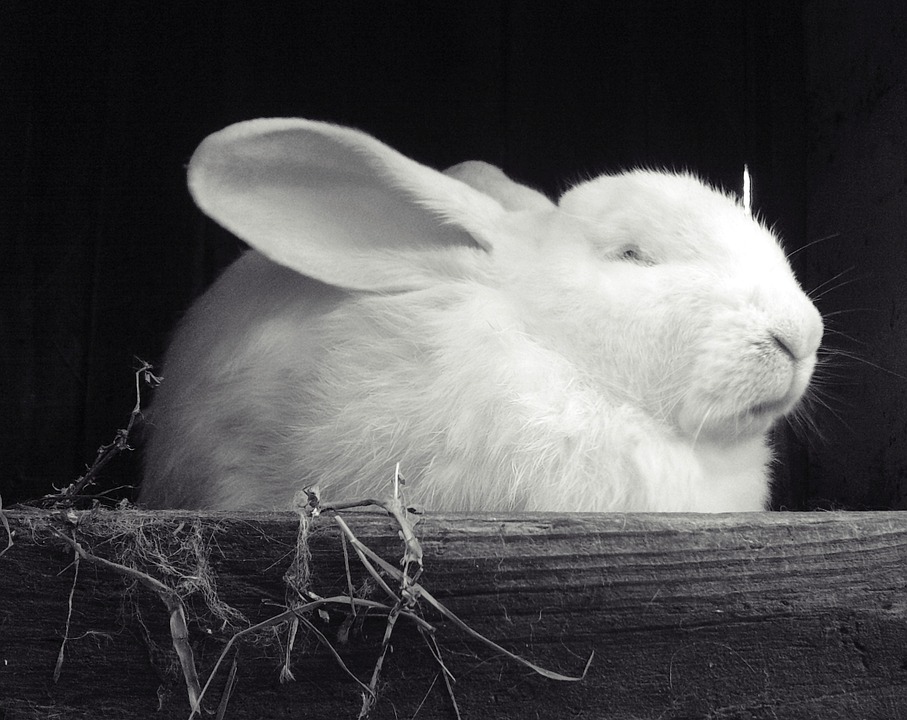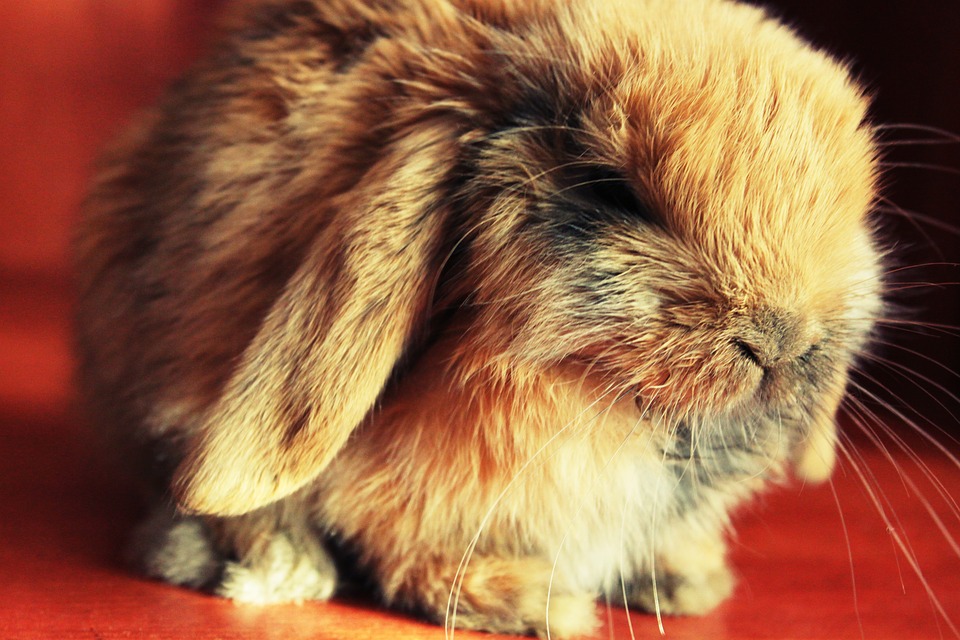This article delves into the fascinating world of rabbit digestion, explaining why rabbits cannot vomit and exploring the complexities of their digestive system. We will uncover the unique two-stage digestive process, highlighting the vital role of hindgut fermentation and the importance of a balanced diet. Furthermore, we'll dispel common misconceptions and provide practical tips for maintaining your rabbit's digestive health.
Part 1: The Mystery of Rabbit Vomiting

1.1: A Unique Digestive System
- Unlike many mammals, rabbits possess a specialized digestive system evolved for efficient processing of plant matter, primarily fibrous grasses and hay.
- Their digestive tract is adapted for extracting maximum nutrients from a diet low in easily digestible sugars and high in indigestible cellulose.
- This adaptation plays a crucial role in the rabbit's survival in their natural environment, enabling them to thrive on readily available plant resources.
1.2: The Absence of Vomiting Reflex
- Rabbits lack the physiological structures and reflexes necessary for vomiting, unlike many other mammals.
- Their stomach is relatively small and directly connected to the small intestine, lacking the muscular capacity for forceful expulsion of contents.
- The absence of vomiting is a protective mechanism, preventing the regurgitation of ingested food that may contain harmful substances, such as toxins or bacteria.
Part 2: The Intricate Two-Stage Digestive Process

2.1: The Foregut – Initial Breakdown
- The foregut, comprising the mouth, esophagus, stomach, and small intestine, handles the initial breakdown of ingested food.
- In the mouth, powerful incisor teeth efficiently chop and grind food, while saliva aids in lubrication and initial starch digestion.
- The stomach, a small, sac-like organ, primarily mixes and stores food, with limited enzymatic digestion occurring.
- The small intestine is where most nutrient absorption takes place, with enzymes from the pancreas and bile from the liver aiding in the breakdown of carbohydrates, proteins, and fats.
2.2: The Hindgut – Fermentation and Absorption
- The hindgut, encompassing the caecum, colon, and rectum, is where the magic of fermentation happens.
- The caecum is a large, pouch-like organ that houses trillions of beneficial bacteria known as the gut microbiome.
- These bacteria play a critical role in breaking down complex carbohydrates, primarily fibre, into volatile fatty acids (VFAs), which serve as a primary energy source for rabbits.
- The colon absorbs water and electrolytes, contributing to the formation of both hard faecal pellets and soft, nutrient-rich cecotropes.
Part 3: The Fascinating World of Cecotropes
3.1: Cecotropes – A Nutritional Powerhouse
- Cecotropes are soft, mucus-covered faecal pellets formed in the caecum, rich in vitamins, amino acids, and VFAs.
- Rabbits practice cecotrophy, a unique behaviour where they re-ingest their cecotropes directly from their anus.
- This behaviour allows them to absorb vital nutrients that were initially missed in the first digestive pass, maximizing nutrient absorption and promoting gut health.
3.2: The Importance of Cecotrophy
- Cecotrophy is essential for rabbits, providing them with essential nutrients, particularly B vitamins, that are difficult to obtain from their diet alone.
- It helps maintain a healthy balance of gut bacteria, essential for proper digestion and immune function.
- The re-ingested cecotropes provide a source of essential amino acids, important for growth, tissue repair, and immune function.
Part 4: Common Digestive Issues in Rabbits
4.1: Gastrointestinal Stasis (GI Stasis)
- GI stasis is a serious condition characterized by a slowdown or complete stoppage of the digestive system.
- It can be triggered by various factors, including diet changes, stress, lack of exercise, and hairballs.
- Symptoms include lethargy, loss of appetite, bloating, decreased faecal production, and a distended abdomen.
- Early intervention is crucial, as GI stasis can quickly become life-threatening if left untreated.
4.2: Dental Problems
- Rabbits' teeth grow continuously throughout their lives, requiring regular trimming to prevent overgrowth.
- Overgrown teeth can hinder chewing, leading to painful mouth sores and difficulty eating, ultimately impacting digestion.
- Regular dental check-ups by a qualified veterinarian are essential to maintain optimal oral health and prevent dental issues.
4.3: Diarrhoea and Constipation
- Diarrhoea in rabbits can be caused by various factors, including bacterial infections, parasitic infestations, and dietary imbalances.
- Constipation is often triggered by dehydration, lack of fibre, or hairballs, leading to the passage of small, hard faecal pellets.
- Both diarrhoea and constipation can be serious conditions, requiring prompt veterinary attention to prevent complications.
Part 5: Maintaining Digestive Health
5.1: The Importance of a Balanced Diet
- Rabbits require a diet rich in fibre, primarily hay, to maintain a healthy digestive system and prevent GI stasis.
- Hay should constitute the majority of their diet, providing essential fibre for gut motility and nutrient absorption.
- Fresh vegetables offer vitamins, minerals, and moisture, but should be given in moderation to avoid disrupting the gut microbiome.
- Rabbit pellets should be used sparingly, as they are calorie-dense and can lead to obesity if overfed.
5.2: Ensuring Fresh Water
- Rabbits need constant access to fresh, clean water for proper hydration and optimal digestive function.
- Ensure their water bowls are filled daily and kept clean to prevent bacterial growth.
5.3: The Benefits of Exercise
- Exercise is crucial for stimulating gut motility and preventing GI stasis.
- Provide ample space for your rabbit to hop, jump, and run, promoting both physical and digestive health.
5.4: Managing Stress
- Stress can have a significant impact on a rabbit's digestive system, potentially leading to GI stasis.
- Provide a safe, enriching environment, free from noise, sudden movements, and predatory animals, to minimize stress levels.
Part 6: FAQs
6.1: Can I give my rabbit Pepto-Bismol?
- No, Pepto-Bismol is not safe for rabbits, as it contains bismuth subsalicylate, which can be toxic to their digestive system.
6.2: What if my rabbit has diarrhoea?
- Diarrhoea in rabbits can be a serious condition. Seek immediate veterinary attention if you notice any signs of diarrhoea, including watery stools, increased frequency, or mucus in the faeces.
6.3: Can I feed my rabbit bread?
- Bread is not a suitable food for rabbits. It lacks nutritional value, can lead to digestive problems, and can cause obesity.
6.4: How often should I feed my rabbit hay?
- Rabbits should have access to fresh hay at all times. Provide a constant supply to ensure they have enough fibre to maintain a healthy digestive system.
6.5: How do I know if my rabbit is constipated?
- Signs of constipation in rabbits include straining to defecate, small, hard faecal pellets, decreased appetite, and a distended abdomen.
6.6: What are the symptoms of GI stasis?
- Symptoms of GI stasis include lethargy, loss of appetite, bloating, decreased faecal production, a distended abdomen, and a hunched posture.
6.7: What should I do if my rabbit is not eating?
- If your rabbit is not eating, seek veterinary attention immediately. Anorexia can be a sign of a serious underlying condition.
6.8: How can I tell if my rabbit is eating cecotropes?
- It is difficult to directly observe cecotrophy, as it usually happens in the nesting box or at night. However, if you notice soft, mucus-covered pellets near your rabbit's anus or in their bedding, it could indicate they are eating cecotropes.
Everyone is watching
-

Do Rabbits Lay Eggs? (The Surprising Truth)
OTHER TYPES OF PETSThis article will unravel the common misconception that rabbits lay eggs, exploring the fascinating world of r...
-

Can Rabbits Eat Grapes? A Guide to Safe Rabbit Treats
OTHER TYPES OF PETSThis comprehensive guide will explore the safety and suitability of grapes for rabbits, providing detailed inf...
-

What's a Group of Rabbits Called? (A Comprehensive Guide)
OTHER TYPES OF PETSThis article delves into the fascinating world of rabbits, exploring the various terms used to describe a grou...
-

Predators That Hunt Rabbits: A Guide to Natural Enemies
OTHER TYPES OF PETSI've always been fascinated by the circle of life, that delicate dance between predator and prey. Growing up ...
-

Are Rabbits Nocturnal Animals?
OTHER TYPES OF PETSThe question of whether rabbits are nocturnal animals is a fascinating one, with a surprisingly complex answer...
